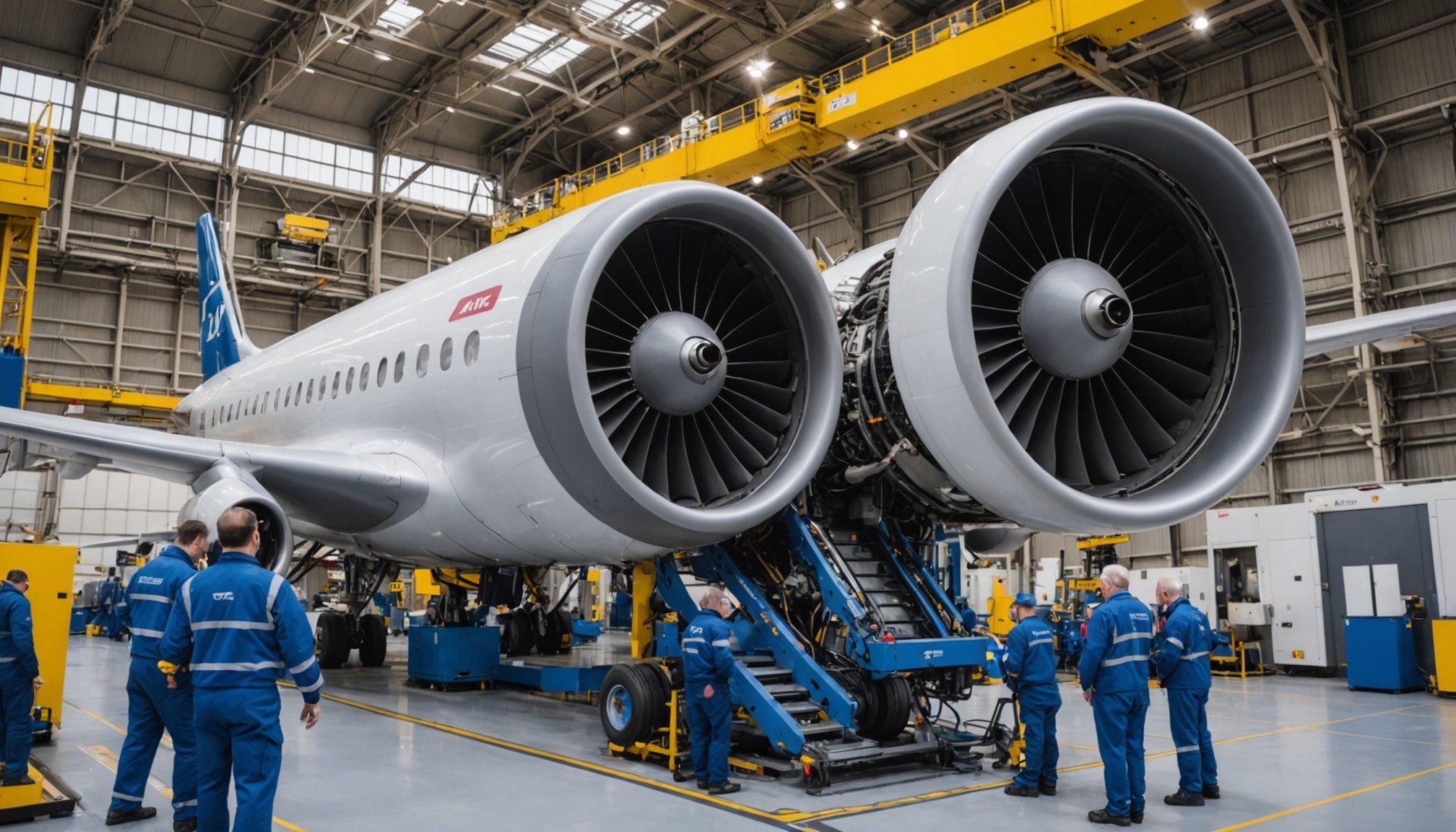The aerospace sector in the UK stands on the brink of transformative change, driven by advanced artificial intelligence. Predictive maintenance, once a reactive endeavor, now leverages AI to foresee issues before they arise. This shift not only enhances operational efficiency but also significantly reduces costs and downtime. By integrating AI technologies, the sector is poised to improve safety and reliability, setting a benchmark for innovation. This evolution promises to redefine industry standards, making maintenance smarter and more proactive.
Overview of Predictive Maintenance in Aerospace
Predictive maintenance is a proactive approach that aims to anticipate equipment failures before they occur. This strategy is particularly crucial in the aerospace industry, where safety and reliability are paramount. By using data-driven insights, predictive maintenance helps to optimise maintenance schedules, thereby reducing downtime and extending the lifespan of aircraft components.
Also to see : Unlocking the Power of AI: Elevating Customer Satisfaction in UK E-commerce
Historically, the aerospace sector relied on reactive maintenance, addressing issues as they arose. However, with the advent of advanced technologies, the industry has shifted towards predictive models. This transition has been especially significant in the UK aerospace sector, which has embraced innovative solutions to enhance operational efficiency and safety.
Key technologies driving predictive maintenance include the Internet of Things (IoT), machine learning, and big data analytics. These technologies enable the collection and analysis of vast amounts of data from aircraft systems, allowing for accurate predictions of potential failures. Methodologies such as condition monitoring and failure mode analysis are integral to this process, providing insights into the health and performance of critical components.
Also to see : Transforming UK Public Sector Procurement: The Role of AI in Enhancing Efficiency and Effectiveness
In essence, predictive maintenance represents a paradigm shift in the aerospace industry, offering a more efficient and reliable approach to aircraft maintenance. By leveraging cutting-edge technologies, the UK aerospace sector continues to lead in implementing these advanced strategies, ensuring both safety and cost-effectiveness.
Role of AI in Enhancing Predictive Maintenance
Artificial intelligence (AI) plays a pivotal role in enhancing predictive maintenance within the aerospace industry. At the heart of this transformation are AI technologies such as machine learning, which significantly impact data analysis and decision-making processes. These technologies enable the maintenance optimization that is crucial for ensuring the reliability and safety of aircraft.
AI Technologies in Predictive Maintenance
AI technologies applied in predictive maintenance include algorithms that can process and analyse large datasets. These algorithms identify patterns and anomalies in aircraft systems, predicting potential failures with high precision. This capability allows for timely interventions, preventing costly and potentially dangerous breakdowns.
Machine Learning's Impact
Machine learning, a subset of AI, enhances predictive maintenance by continuously improving its predictive models. It refines its analysis based on historical data, leading to more accurate forecasts. The result is a robust decision-making framework that supports maintenance teams in scheduling necessary repairs and replacements efficiently.
Case Studies in the UK Aerospace Sector
In the UK aerospace sector, AI applications have demonstrated tangible benefits. For example, some airlines have successfully implemented AI-driven systems that monitor engine performance in real-time. These systems have reduced unscheduled maintenance events, showcasing the practical advantages of AI in maintenance optimization. Through these innovations, the UK continues to lead in adopting AI for aerospace predictive maintenance.
Benefits of AI-Driven Predictive Maintenance in the UK Aerospace Sector
AI-driven predictive maintenance offers numerous advantages that are transforming the aerospace industry in the UK. One of the most significant benefits of AI is the substantial reduction in operational costs. By accurately predicting when maintenance is needed, airlines can allocate resources more efficiently, avoiding unnecessary repairs and extending the lifespan of aircraft components.
Another critical advantage is the increase in aircraft reliability and safety. AI technologies enable precise monitoring of aircraft systems, identifying potential issues before they escalate into major problems. This proactive approach ensures that aircraft remain in optimal condition, enhancing safety for passengers and crew alike.
Enhanced Maintenance Scheduling
AI-driven predictive maintenance also improves maintenance scheduling, leading to reduced downtime. By analysing vast datasets, AI systems can forecast maintenance needs with high accuracy, allowing for timely interventions. This precision in scheduling means that aircraft spend less time on the ground and more time in the air, boosting operational efficiency.
- Reduction in operational costs
- Increased aircraft reliability
- Enhanced maintenance scheduling
In essence, the benefits of AI in predictive maintenance are multifaceted, contributing to cost savings and operational efficiency. As the UK aerospace sector continues to embrace these technologies, the industry is set to achieve even greater levels of safety and performance.
Challenges and Solutions in Implementing AI for Predictive Maintenance
Implementing AI in predictive maintenance presents several implementation challenges. One primary hurdle is data integration. Aerospace systems generate vast amounts of data, but integrating this data from disparate sources can be complex. Effective data integration requires robust systems that can seamlessly merge information from various aircraft components to provide a comprehensive view of their health.
Another significant challenge is workforce training. The shift towards AI-driven maintenance necessitates new skills and expertise. Training programs must be developed to equip the workforce with the necessary knowledge to leverage AI technologies effectively. This includes understanding machine learning algorithms and data analysis techniques to interpret AI-generated insights accurately.
To address these challenges, the industry must adopt strategic approaches. For data integration, employing advanced analytics platforms that support interoperability is crucial. These platforms can facilitate the smooth exchange of information across different systems, enhancing the accuracy of predictive maintenance models.
In terms of workforce training, investing in continuous education and skill development is essential. By providing training sessions and workshops, organisations can ensure their teams are proficient in using AI tools, ultimately leading to more efficient maintenance operations. As the aerospace industry continues to embrace AI, overcoming these challenges is vital for successful implementation.
Future Trends and Implications for the Aerospace Industry
As the future of aerospace unfolds, emerging AI technologies promise to revolutionise the industry further. These technological advancements are set to enhance predictive maintenance, offering more precise and efficient solutions. AI is expected to evolve, incorporating deeper learning capabilities and real-time data processing. This evolution will enable even more accurate predictions of equipment failures, reducing downtime and increasing aircraft reliability.
In the coming years, the landscape of predictive maintenance is likely to become more integrated with other technological advancements. Innovations such as digital twins and advanced IoT sensors will provide comprehensive insights into aircraft health. These tools will allow for continuous monitoring and immediate response to potential issues, ensuring optimal performance and safety.
The implications for stakeholders in the aerospace industry are significant. Manufacturers will need to adapt to these changes, investing in new technologies and training their workforce to remain competitive. Regulatory bodies, on the other hand, will face the challenge of updating standards and guidelines to accommodate these advancements. By embracing these future trends, the aerospace industry can achieve new heights in efficiency, safety, and innovation. The future of aerospace is bright, with AI-driven predictive maintenance at its core.











